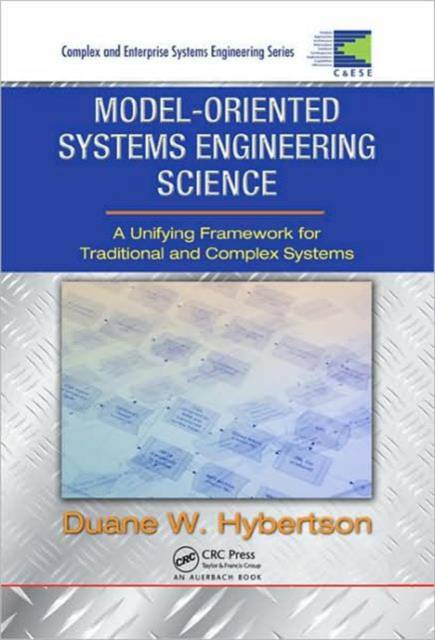
- Retrait gratuit dans votre magasin Club
- 7.000.000 titres dans notre catalogue
- Payer en toute sécurité
- Toujours un magasin près de chez vous
- Retrait gratuit dans votre magasin Club
- 7.000.0000 titres dans notre catalogue
- Payer en toute sécurité
- Toujours un magasin près de chez vous
Model-Oriented Systems Engineering Science
A Unifying Framework for Traditional and Complex Systems
Duane W HybertsonDescription
Systems engineering (SE) is experiencing a significant expansion that encompasses increasingly complex systems. However, a common body of knowledge on how to apply complex systems engineering (CSE) has yet to be developed. A combination of people and other autonomous agents, crossing organization boundaries and continually changing, these hybrid systems are less predictable while being more self-organizing and adaptive than traditional systems. The growing pains of this evolution and the ever-widening reach of SE technology require an effective foundation for integrating traditional and complex engineering methods, addressing machine and human interaction, as well as scaling up and down, from nano scale to the macro system-of-systems level.
Model-oriented Systems Engineering Science: A Unifying Framework for Traditional and Complex Systems addresses solutions to that expansion and integration problem. This text takes advantage of better-understood systems science (SS) to support the transition, identifying and using commonalities between complex systems and other sciences, such as biology, sociology, cognitive science, organizational theory, and computational science. The author defines Model-oriented Systems Engineering Science (MOSES), an organized system that selects appropriate information from these disciplines and unifies it into a coherent framework. The result is a seamless approach to the class of systems across the extended scope of the new SE--a foundation upon which to develop an enhanced and unified SE.
Modeling orientation (MO) provides a common perspective on the entire SES/SE enterprise, including all supporting sciences, engineering for the full range of traditional, complex, and hybrid systems, and their management. This book extends existing modeling approaches into an MO that views all science artifacts and engineering artifacts as models of systems. It organizes them into a virtual structured repository called the "SE model space"--effectively a container for the accumulating body of SE and SES knowledge in the form of models and patterns. By organizing and integrating all these elements into a common framework, the author makes the material not only easily accessible but also immediately applicable, and provides a well-grounded basis for future growth and evolution of the SE discipline.
Spécifications
Parties prenantes
- Auteur(s) :
- Editeur:
Contenu
- Nombre de pages :
- 388
- Langue:
- Anglais
- Collection :
Caractéristiques
- EAN:
- 9781420072518
- Date de parution :
- 01-06-09
- Format:
- Livre relié
- Format numérique:
- Ongenaaid / garenloos gebonden
- Dimensions :
- 178 mm x 257 mm
- Poids :
- 861 g

Les avis
Nous publions uniquement les avis qui respectent les conditions requises. Consultez nos conditions pour les avis.






